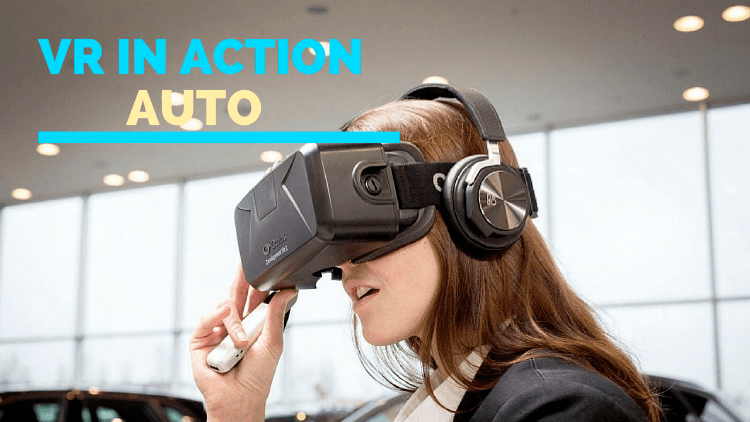As virtual reality continues to be adopted for uses outside of entertainment, many forward thinking companies are finding ways to incorporate this emerging technology into their business. One area that VR is gaining traction is the auto industry. By using this technology to streamline their design process and showcase upcoming concept cars, innovative companies like Ford, Audi, Volkswagen, and several others are helping to bring the auto industry into the future.
Several auto makers are beginning to use virtual reality as a sales and marketing tool. Both Audi and Ferrari are beginning to allow customers to utilize virtual showrooms when purchasing a car. By using a VR headset, these manufacturers are allowing consumers to view different car models, as well as change the color and configuration of the car. This is allowing these companies to sell their in unique locations like boutique stores, premium shopping malls, or even in people’s homes.
Chrysler has also created an engaging application of VR by putting together an interactive experience that used the technology to allow users to walk through their assembly plant in Michigan. Volvo has also incorporated VR for a “test-drive” experience on Google Cardboard to build excitement for the launch of some of their vehicles.
One very interesting use of VR technology has come from Toyota. Rather than VR for sales or marketing, they have incorporated a safety campaign designed to show the dangers of distracted driving in a virtual environment. The simulation allows drivers to immerse themselves into a realistic driving environment, complete with traffic sounds, radio, virtual friends, and text messages. The experience is meant to educate teens on how distractions can effect then while driving.
One of the early adopters of VR technology was Ford Motor Company, and they have continued to be a leader in this area. Stating that they believe that virtual reality will revolutionize the industry, they have made VR a key piece to their development process. By incorporating devices like the Oculus Rift, Ford showcases renderings of concepts for upcoming models in order to get feedback on the design. Their aim is to understand the perceived quality of the vehicles, as the customer would see them. The idea is to have people experience the cars, before they actually invest money into production.
Ford has developed their own immersion lab to help with this process. At this advanced facility, employees can wear a VR headset, and walk around or sit in a car, while colleagues watch the experience on a large screen. Ford uses this technology to examine the feel for each aspect of the car, and allows the manufacturer to make informed decisions on different design elements very early in the production process.
It seems that from the auto industry perspective, VR technology is here to stay. As the Oculus and Vive come into stores later this year, and become more common in consumers’ homes, expect auto manufacturers to release gripping experiences in order to take advantage of the new marketing opportunities. You can also expect auto makers to follow the examples of other industries and incorporate VR into every aspect of their design process.
